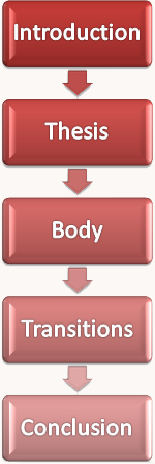In your writing, you must make ideas clear not only for yourself, but also for your readers. Being organized is a matter of balancing these two concerns—your ideas and how you convey them to your readers. Then, it must be presented so that your readers, or audience, will understand what you are trying to say.
Organizing your Paper
Keep these two elements in mind when you want to be understood clearly.
- What is it that you want to say? You can't be organized if you are unclear about your own ideas.
- How are you going to say what you want to say in a manner that others will understand?
Organizational Tips
- Make sure the goal of your paper is clear in your own mind, whether that be a thesis statement, topic, or question. What do you want to accomplish with this piece of writing?
- Then, shift gears to your audience. Write down the thesis and your ideas in an outline format. Sometimes it's easier to start with a simple list, and then use the list to make an outline.
- Revision is a key part of organizing your writing. Everything that appears in the paper must be related to your thesis or main idea, and you have to direct the reader's focus as you develop your thesis. There should never be a moment when the reader cannot follow the movement of the argument, even when the argument becomes complicated. This can be hard to see if you've been working on the paper by yourself. Visit the Writing Center and ask a tutor if he or she can follow your argument.
- Read over the entire paper out loud. Randomly pick out sentences and entire paragraphs. Do they support your thesis? Sometimes they support your thesis indirectly by first supporting a main point.
- It is also important to give your paper to someone else so they can read it without cues from you. Again, try to bring your work to the Writing Center to put a fresh set of eyes on it.
Introduction
 Have you created an expectation in the reader's mind for what your paper will discuss? Here is the place for risk-taking, creativity, and surprise, but it is also the first place that readers see. Does it serve as a good starting position? What are you promising the reader you will deliver?
Have you created an expectation in the reader's mind for what your paper will discuss? Here is the place for risk-taking, creativity, and surprise, but it is also the first place that readers see. Does it serve as a good starting position? What are you promising the reader you will deliver?
Thesis (determining a thesis)
Has your introduction set up the main point of your paper? If someone asked you what your paper was about, will a one- or two-sentence thesis give them an answer? Finally, does it set up the argument that the rest of the paper deals with?
Body
Is the line of reasoning you chose spelled out for your reader? Will the reader wonder, Why am I reading this? Are some points more important than others? Are any extraneous? Does the thesis need more support? Did you follow your outline?
Transitions (making transitions)
Transitions help a reader to follow your line of reasoning. Don't lose your reader; make sure they can follow the flow of your paper. Keep bringing the reader back to the main point.
Conclusion
One option is to make this section short and poignant. Return to the main point of your introduction. Come back to a place where you could (but of course you won't) write your thesis statement again. Keep in mind that the conclusion should never contradict your main point.
For more help, print out this checklist and let it guide you through organizing your paper.
As you may have concluded, having good organization means writing well in general. A good paper will have good organization; an abominable paper will not.
More Writing Help
The Kathleen Jones White Writing Center provides tutoring services, workshops, and writing resources.
Tutoring
- In-Person: 203 Stabley Library
- Online Tutoring: Use the online writing center.
Workshops
- Instructors: Request a workshop for your class.
- Students: Attend a Wednesday-night workshop.
- Online Workshops: APA Documentation, MLA Documentation.